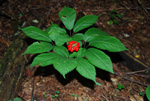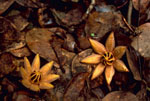As of 2012, more than 29,000 species of plants are listed in the Convention on International Trade in Endangered Species of Wild Fauna and Flora (CITES) Appendices, nearly 400 of which are native to the United States. Which species are listed? To determine if a species is protected internationally by the CITES treaty, please consult the CITES Species Database where you search by scientific or common name.
Please note that the Appendix in which a species is listed determines its trade regulations. An Appendix I plant cannot be commercially traded. An Appendix II or III plant can be traded but will require the appropriate permits or certificates. For more information on the Appendices, visit our How CITES Works page. For information on the permitting process, visit our Branch of Permits page.
For information on select CITES-listed plants, scroll down to see highlighted species. Or choose from the list of plants on the menu to the left.

Credit: Gary Kauffman/
U.S. Forest Service
American Ginseng: American ginseng is a long-lived perennial plant that grows in woodlands throughout the mountain areas of the Eastern United States and Canada. American ginseng roots have been traded continuously in international commerce since the beginning of the 18th Century. The biggest market has always been in Asian countries, where several tons of wild American ginseng are exported every year. American ginseng has been protected under CITES since 1975.

Credit: Gary M. Stolz/USFWS
Mahogany: Mahogany consists of three species in the same genus in the Meliaceae family – bigleaf mahogany, Pacific coast mahogany, and Caribbean mahogany. Mahogany is native to the Caribbean and Central and South American lowland tropical or subtropical forests where rainfall averages between 1 and 2.5 meters. It is a strong, hard wood with a red hue and fine grain pattern, making it ideal for use in furniture, doors, paneling, musical instruments, ships, caskets, veneer, and plywood. Due to strong demand for the wood of these relatively slow-growing trees, all three species are CITES listed.

